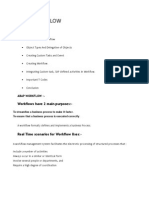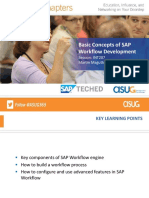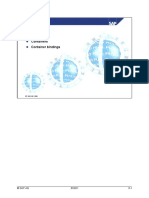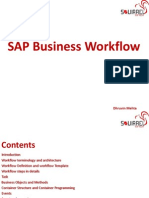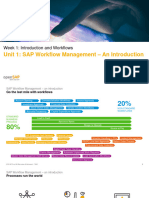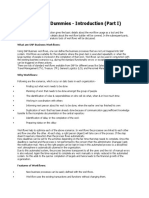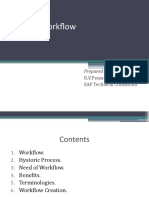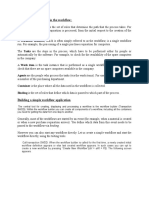0% found this document useful (0 votes)
22 views2 pagesWorkflowsap
The document outlines the SAP workflow system, which automates and streamlines business processes through a defined series of interconnected activities. Key components include workflows, containers, activities, tasks, class methods, and data binding, all of which facilitate task execution and data management. The workflow is visually represented as a flow chart, making it easy to understand the sequence of operations and their outcomes.
Uploaded by
kittugrepthorCopyright
© © All Rights Reserved
We take content rights seriously. If you suspect this is your content, claim it here.
Available Formats
Download as DOCX, PDF, TXT or read online on Scribd
0% found this document useful (0 votes)
22 views2 pagesWorkflowsap
The document outlines the SAP workflow system, which automates and streamlines business processes through a defined series of interconnected activities. Key components include workflows, containers, activities, tasks, class methods, and data binding, all of which facilitate task execution and data management. The workflow is visually represented as a flow chart, making it easy to understand the sequence of operations and their outcomes.
Uploaded by
kittugrepthorCopyright
© © All Rights Reserved
We take content rights seriously. If you suspect this is your content, claim it here.
Available Formats
Download as DOCX, PDF, TXT or read online on Scribd
/ 2












